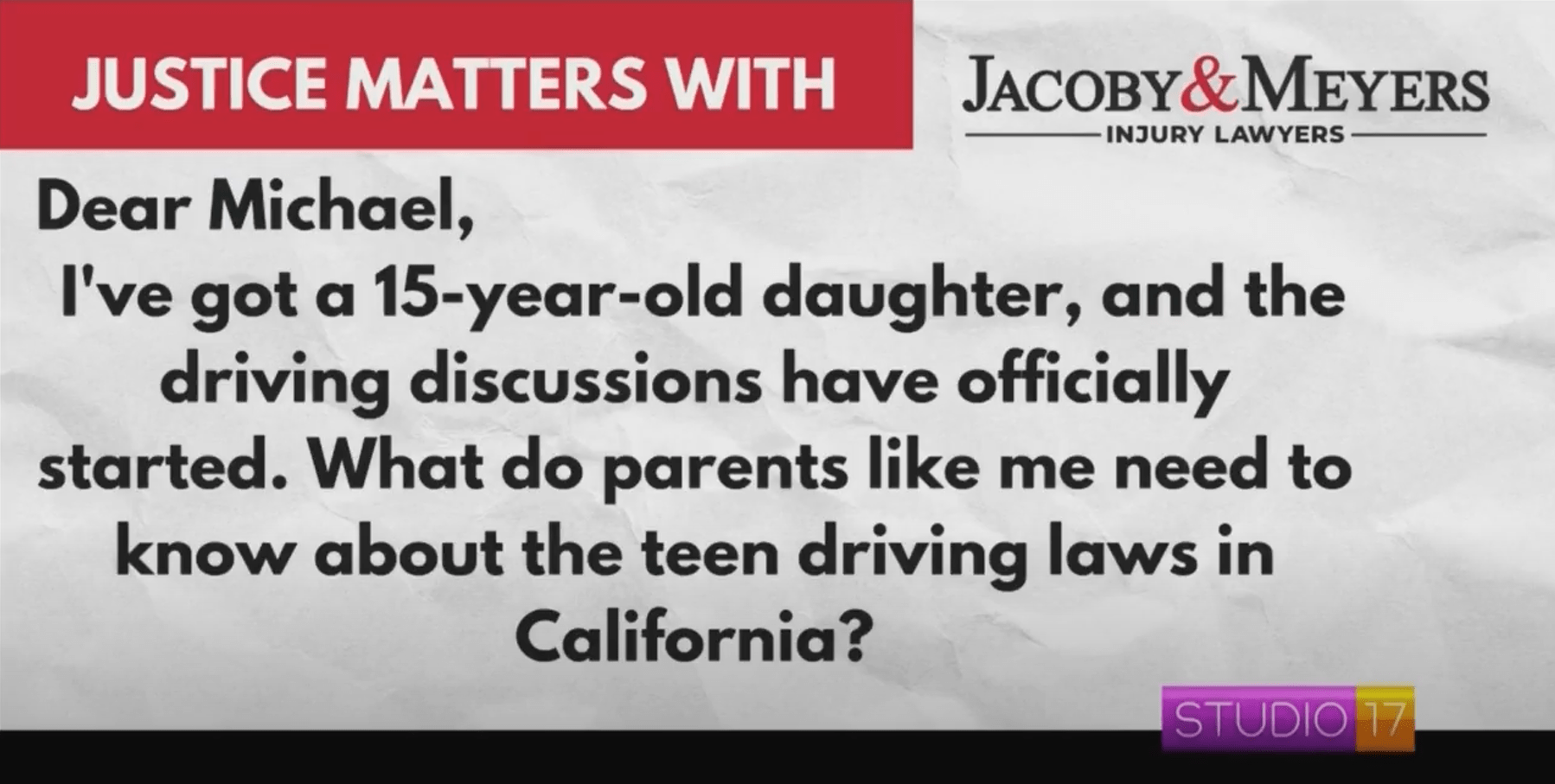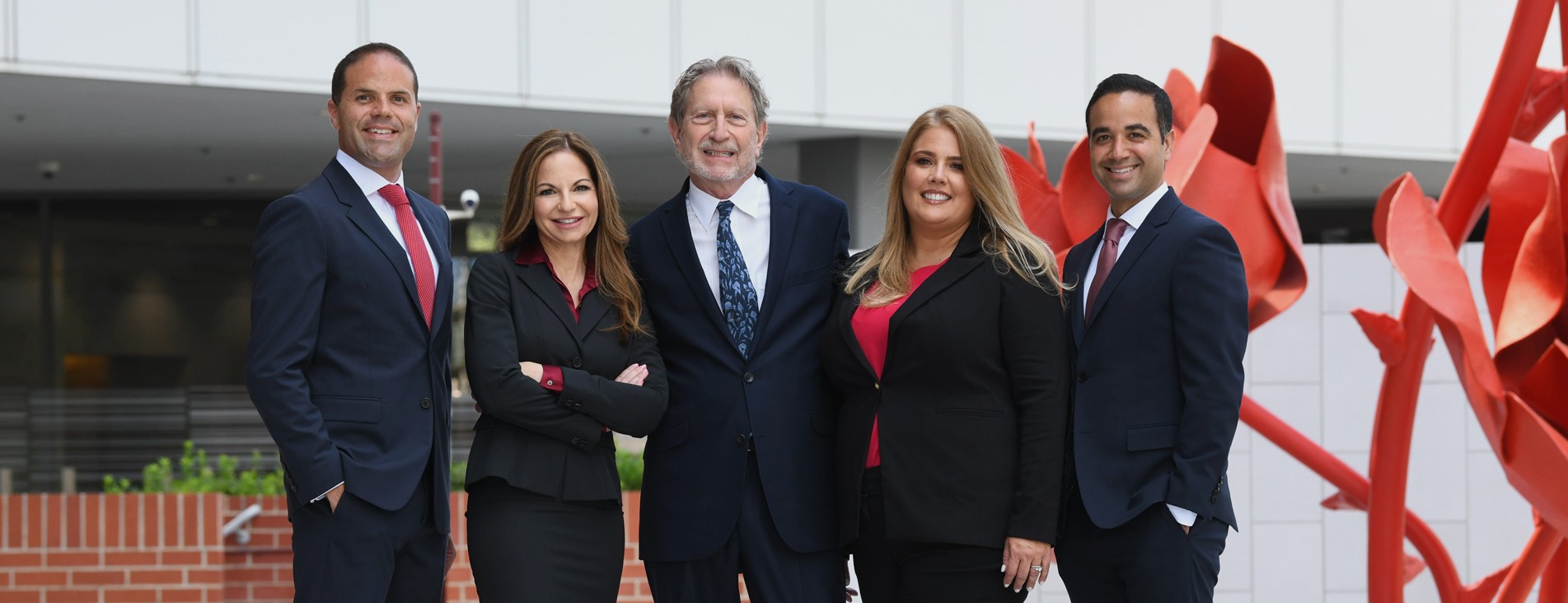Justice Matters with Michael Akiva
“Justice Matters” addresses the common legal questions from everyday individuals, presented by Michael Akiva, the managing partner at Jacoby & Meyers, California’s largest personal injury law firm.
Since 1972, the firm has championed making legal services accessible and affordable, specializing in personal injury cases. Beyond financial compensation, our mission is to help victims rebuild their lives following unexpected tragedies.
With every case we undertake, we reaffirm that justice should be an equal right, not a privilege, which is why our consultations are always free.
In this episode, we tackle the critical subject of California teen driving laws, a pertinent issue for parents with driving-age children.
Episode Highlights
- California’s system helps teens learn to drive in stages, including learner’s permits, driver’s education, provisional permits, and a provisional license.
- The provisional license has specific rules, such as a typical one-year limitation on driving with passengers under 18.
- Parents are advised to familiarize themselves with these laws and review their insurance coverages.
- Teens need their insurance policy, or parents should add them explicitly to their existing policy, as they’re most likely not covered unless specifically included.
From The Expert’s Desk

Direct from Michael Akiva
California’s system, structured at graduated levels, methodically introduces new drivers to the road. Teenagers can’t just hit the road immediately. Starting at the age of 15 and a half, they can apply for a learner’s permit by taking a test. And only if they pass that test, can they do driver’s education.
Driver’s education is, in essence, a practical license course. It’s a familiar scene for many: the student driver at the wheel and an instructor equipped with a passenger-side brake, navigating local streets to get a sense of driving in real conditions.
With driver’s education complete, the next step is obtaining a provisional permit. This third stage involves authorizing teenagers to drive accompanied by an adult. They must log a certain number of driving hours in both daytime and nighttime conditions. After satisfying these requirements, they become eligible for a provisional license at age 16.
Now, a provisional license comes with its own set of rules. To the best of my knowledge, there is typically a one-year period where the new driver is prohibited from having passengers under the age of 18 in the car, among other limitations.
My key piece of advice to every parent with children approaching driving age is to familiarize themselves with these laws and to scrutinize their insurance options thoroughly.
A common misconception is that teenagers living at home are automatically covered by their parent’s car insurance policy. That’s not the case.
They need their own policy, or parents must expressly add them to the existing one. Check with your insurance provider to explore adding them, because unless you do so proactively, they are likely excluded from the policy.
This is crucial information that I’d like all parents, listeners, and viewers to take to heart.
The Graduated Driver Licensing (GDL) Program
A safe driver has gained a lot of practice, experience, and knowledge about the rules of the road and how several drivers drive. If your teenager is starting their driving journey, California, fortunately, follows a graduated system, also known as the Graduated Driving License (GDL) Program, that encourages a systematic way for young drivers to obtain the necessary skills and experience before acquiring full driving privileges.
This program is divided into several phases, each with distinct age requirements, training standards, and limitations designed to lower the likelihood of collisions and encourage safe driving practices.
Stage 1: Learner’s Permit
The Learner’s Permit is the first step in teaching young drivers at least fifteen and a half years old how to drive. People often need to pass eye and knowledge exams, finish basic driving instruction, and fulfill a minimum of 30 hours of formal driver-ed lessons and 6 hours of behind-the-wheel training to acquire a learner’s permit.
Teen drivers must adhere to the following restrictions before transitioning to the next stage:
- Only drive when accompanied by an adult who is at least 25 years old and possesses a valid CA driver’s license.
- Fulfill at least 50 hours of supervised driving, including 10 hours of nighttime practice.
- Avoid driving under the influence of alcohol.
- Refrain from using mobile devices like phones while operating a vehicle.
- Ensure a clean driving record is maintained.
Stage 2: Provisional License
The provisional license is a stage in the GDL program that allows young drivers, usually aged 16 to 18, to drive independently with some restrictions.
Individuals must be between 16 and 18 years old to qualify for a provisional license. Additionally, they must have fulfilled the required 50 hours of supervised driving practice, as evidenced by a parent’s signature on the instructor’s permit. Furthermore, passing a practical driving examination at the Department of Motor Vehicles (DMV) is necessary.
As mentioned, teen drivers with provisional licenses have more independence than those with learner permits. However, they must still be mindful of the restrictions imposed, including:
- Driving between 11 P.M. and 5 A.M. is prohibited for 12 months unless accompanied by a licensed driver aged 25 or older.
- Passengers under 20 are prohibited, except when accompanied by a licensed adult aged 25 or older.
- Alcoholic beverages are not permitted in the vehicle.
- Using mobile devices, such as phones, while driving is prohibited.
Stage 3: Full License
You must be at least 18 years old to get a complete license. In addition, the requirements listed in phases 1 and 2 (learner’s permit and provisional license) must have been met. You also need to have a clean driving record.
Rules of the Road: Obtaining Insurance for Your Teen Driver
The first step to guaranteeing your young driver’s safety and legal compliance while driving is to get them insurance. You can do this by:
- Getting separate insurance for your teen driver or
- Adding them to your existing policy by contacting your insurance company.
Note that including your teen driver in your existing auto insurance coverage is usually less expensive than getting them a new policy. Make sure your insurance policy’s deductible and coverage limits are sufficient to safeguard your young driver. Adjustments can be required depending on several variables, including your financial status and the vehicle’s worth.
You can also choose the type of coverage you need for your adolescent driver when purchasing a new one. This could include liability coverage, collision coverage, comprehensive coverage, and others. Discuss your options with your insurance agent to identify the best coverage for your teen’s driving habits and the vehicle they will be using.
How Can Jacoby & Meyers Help You?
Understanding the inevitability of accidents despite thorough road safety education, Jacoby & Meyers offers legal support for families in California, ensuring you and your teen are well-informed, protected, and competently represented.
Here’s how we can help:
- Maximize Settlements: Securing the highest possible compensation for incidents involving teen drivers.
- Legal Representation: Providing powerful courtroom advocacy for your teen in trials and disputes.
- Evidence Collection: Using extensive resources to gather evidence to strengthen your teen’s case.
- Comprehensive Compensation: Fighting for full coverage of damages, including medical costs and emotional distress.
- Expert Networks: Enhancing case validity through testimonials from medical and professional experts.
With Jacoby & Meyers, families have a formidable ally in dealing with the complexities of teen driving laws and incidents in California.
For further information, these blog posts offer more insights:
- How Personal Injury Claims for Minors Must be Handled Legally and What it Means for Your Settlement
- Car Accident Insurance 101
- How to Find Out If Someone Has Auto Insurance Coverage
Submit Your Legal Questions
We invite our readers and viewers to submit their legal questions for future episodes of “Justice Matters.” For the full episode and more insights, click here.
If you need legal help, Jacoby & Meyers is ready to assist. Visit our Contact Page or call us at 800-500-0000 for a free consultation.
Call or text 888-522-6291 or complete a Free Case Evaluation form







